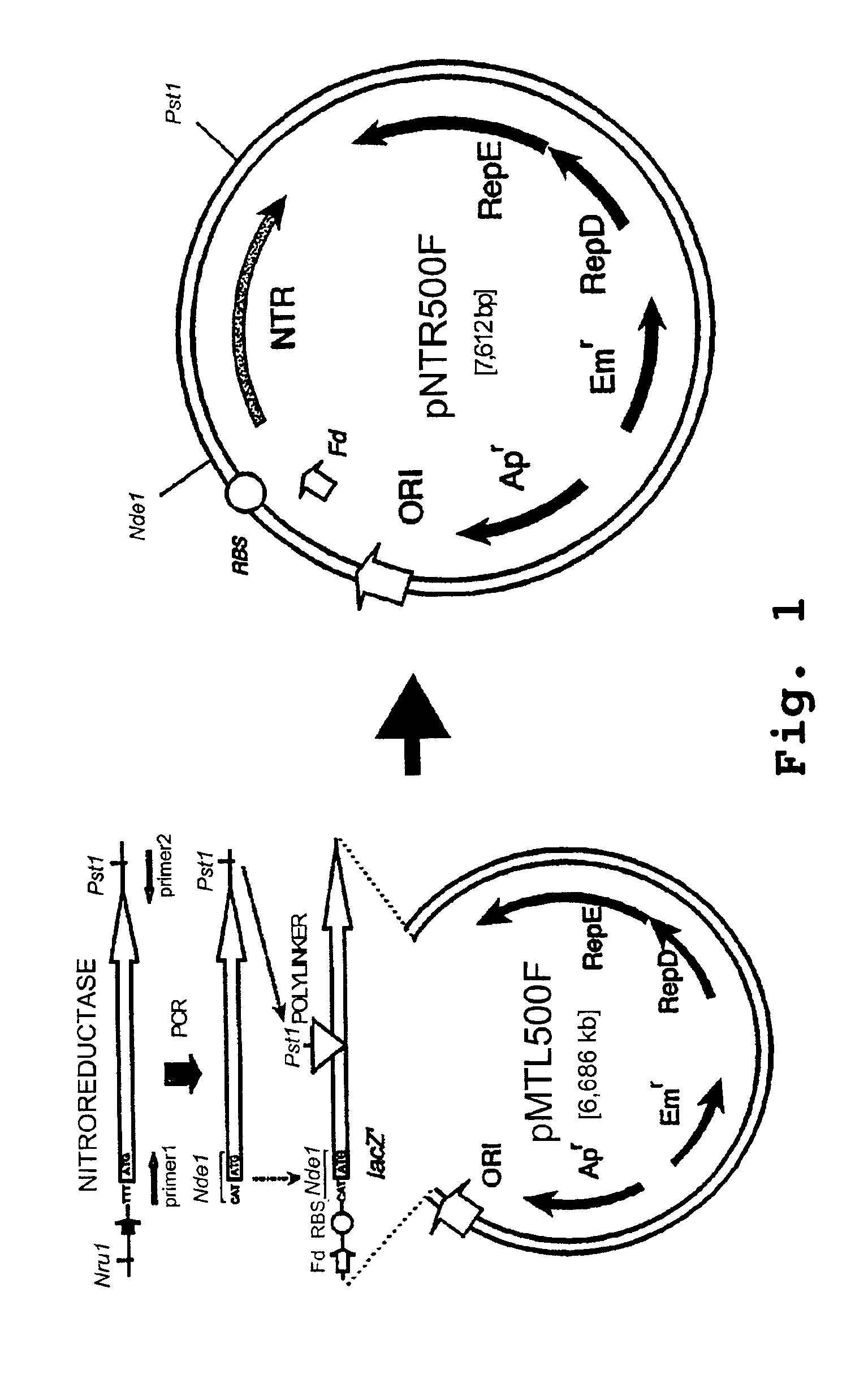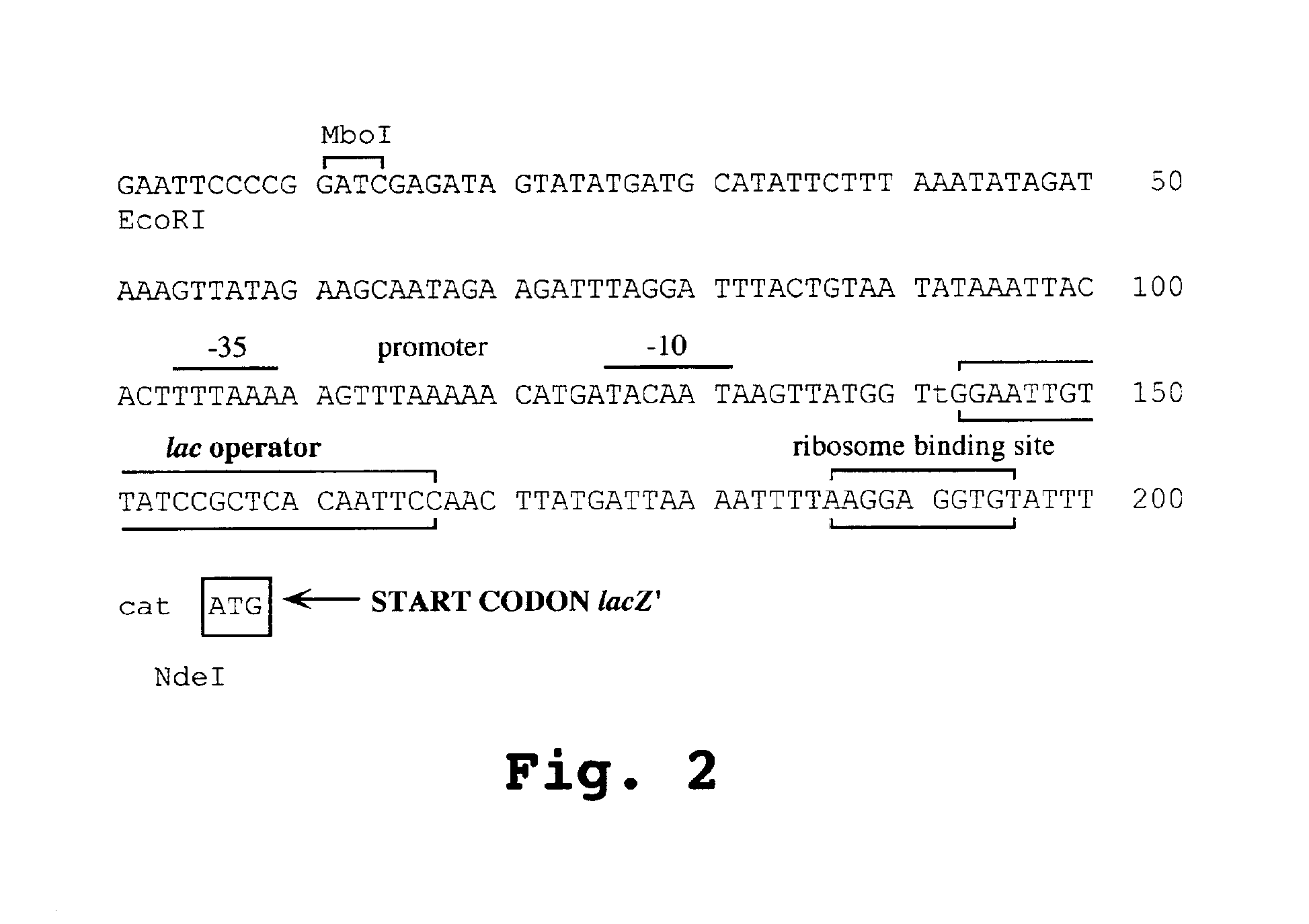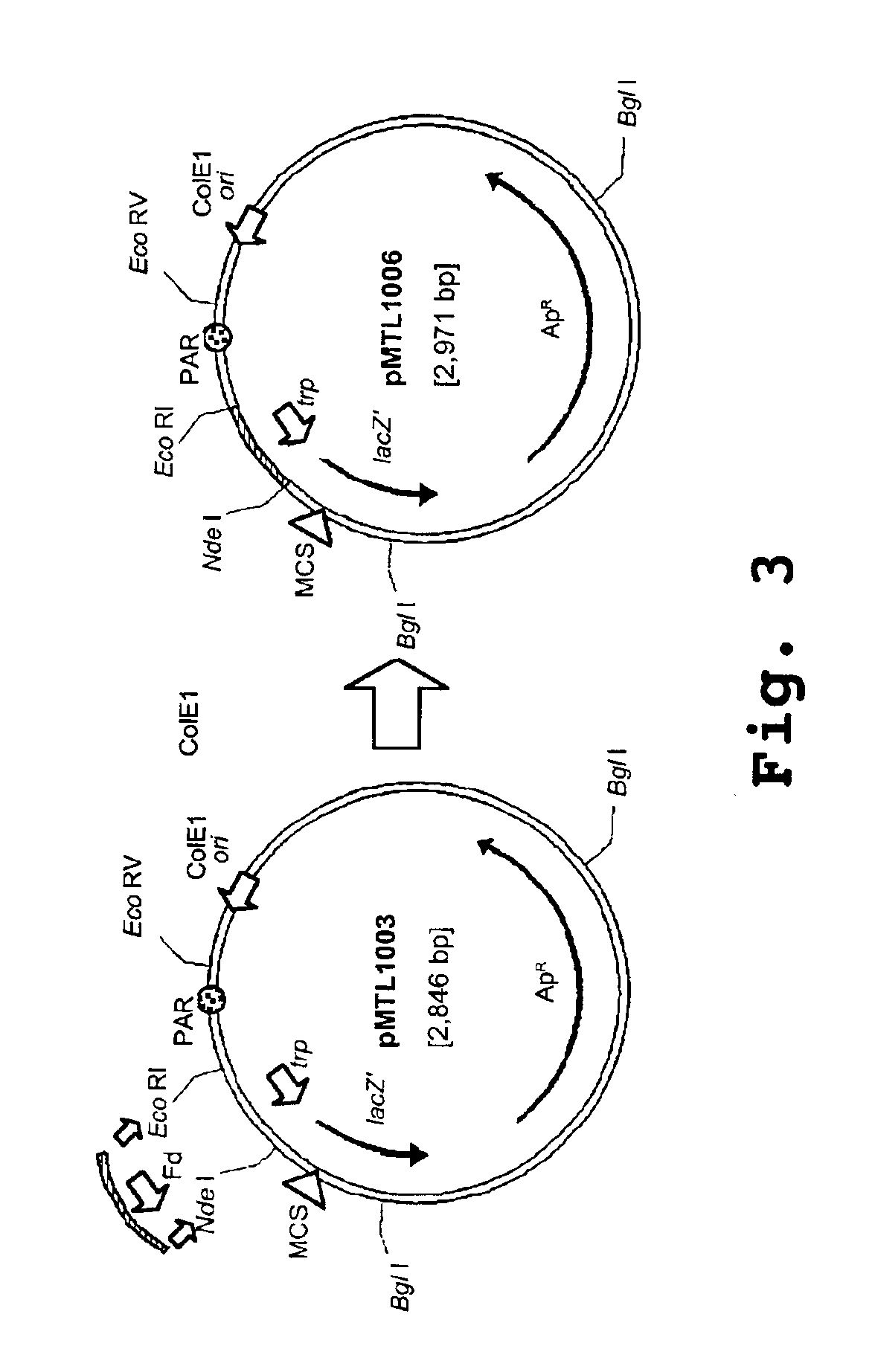Anaerobe targeted enzyme-mediated prodrug therapy
a targeted enzyme and prodrug technology, applied in the field of genetically engineered bacteria, can solve the problems of high clinical success, toxic to rapidly proliferating non-cancerous cells, and intensive search
- Summary
- Abstract
- Description
- Claims
- Application Information
AI Technical Summary
Benefits of technology
Problems solved by technology
Method used
Image
Examples
example 1
Expression of the E. coli ntr Gene in Clostridium spp
[0247]A. Construction of Vectors for Expression of Nitroreductase
[0248]The gene (ntr) encoding E. coli B nitroreductase (NTR) was cloned and its nucleotide sequence determined. The fragment characterized was shown to carry the ntr promoter in addition to the structural gene. The transcriptional initiation signals and the ribosome binding sites (RBS) from the gram-negative E. coli were replaced with Gram-positive equivalents, as follows.
[0249]Based on the previously constructed E. coli Clostridium cloning vector, pMTL500E (Oultram et al), the promoter and RBS of the lacZ′ were replaced in pMTL500F by the equivalent signals of the ferrodoxin (Fd) gene of Clostridium pasteurianum, as illustrated in FIG. 1. A 604 bp MboI fragment carrying the Clostridium pasteurianum ferrodoxin gene was isolated from the genome of strain ATCC 6013 and cloned into the BamHI site of M13mp7. The nucleotide sequence of the cloned fragment was found to be ...
example 2
Expression of Cytosine Deaminase in Clostridium spp
[0265]A. Vector Construction
[0266]A plasmid vector designated pCD540F was constructed as illustrated in FIGS. 7-9. The pMTL500F plasmid described in Example 1 (FIG. 4) was modified by replacing the pAMβ1-derived origin of replication with a replicon derived from the Clostridium butyricum plasmid pCB012 (Minton, N. P. et al.) Plasmid pMTL540F was constructed in an analogous fashion to pMTL500F. First, a similar plasmid to pMTL500E (FIG. 4) was made, designated pMTL540E and shown in FIG. 7, by inserting a blunt-ended 1.53 Kb LspI-HindIII fragment from pCB102 into the NheI site, similarly blunt-ended, of the replicon cloning vector pMTL20E (Swinfield et al.). The lac promoter of pMTL540E was then replaced with the promoter of the ferrodoxin (Fd) gene by combining a 3.64 Kb Bg1I fragment from pMTL540E with a 1.871 Kb Bg1I fragment isolated from pMTL500F, as shown in FIG. 8. The resulting plasmid was designated pMTL540F.
[0267]Expression ...
example 3
Expression of the β-glucuronidase Gene (uidA) in C. acetobutylicum
[0288]Oligonucleotide primers, based on the published sequence, were utilized to amplify a fragment carrying the β-glucuronidase gene from E. coli K12 (Jefferson et al., 1986). One of the PCR primers employed created an NdeI site ‘over’ the uidA start codon, to facilitate insertion of the gene into pMTL500F, described in Example 1 and shown in FIG. 4, resulting in a modified form of the pMTL500F vector comprising the coding sequence for β-glucuronidase.
[0289]β-glucuronidase has to be exported out of the clostridial cell in order to be active. To achieve this, the uidA gene was constructed with a 5′ signal sequence to promote secretion of the translated protein by the classical signal peptide route (Bosslet et al., 1992). Two signal sequences were employed: (1) the Clostridium thermocellum celA gene (Beguin et al., 1985); and (2) the staphylococcal protein A gene (Shuttleworth et al., 1987). The 5′-end of the lacZ′ ge...
PUM
| Property | Measurement | Unit |
|---|---|---|
| temperature | aaaaa | aaaaa |
| temperature | aaaaa | aaaaa |
| freezing temperature | aaaaa | aaaaa |
Abstract
Description
Claims
Application Information
 Login to View More
Login to View More - R&D
- Intellectual Property
- Life Sciences
- Materials
- Tech Scout
- Unparalleled Data Quality
- Higher Quality Content
- 60% Fewer Hallucinations
Browse by: Latest US Patents, China's latest patents, Technical Efficacy Thesaurus, Application Domain, Technology Topic, Popular Technical Reports.
© 2025 PatSnap. All rights reserved.Legal|Privacy policy|Modern Slavery Act Transparency Statement|Sitemap|About US| Contact US: help@patsnap.com



